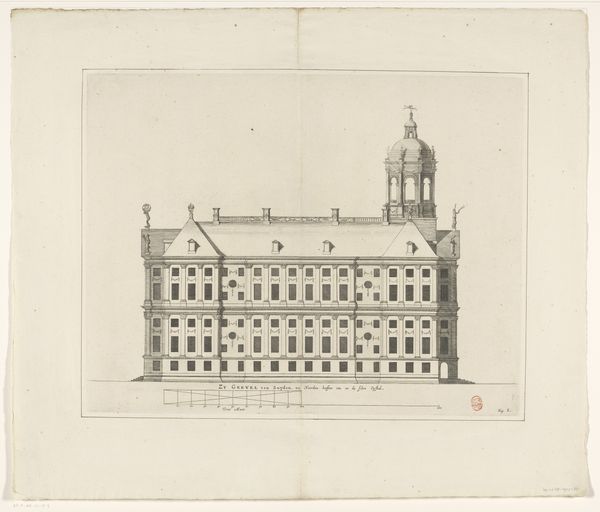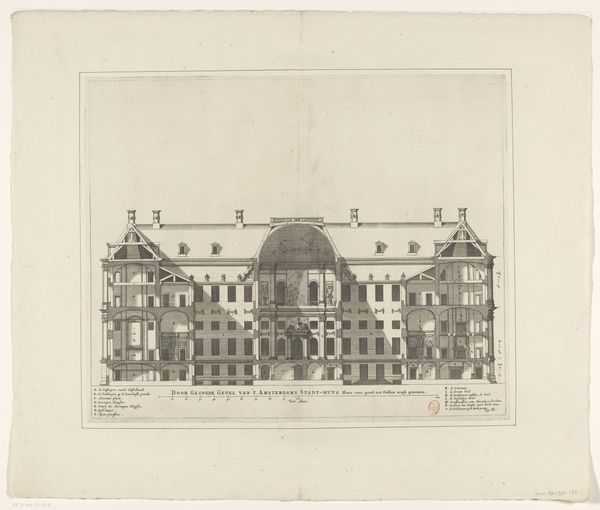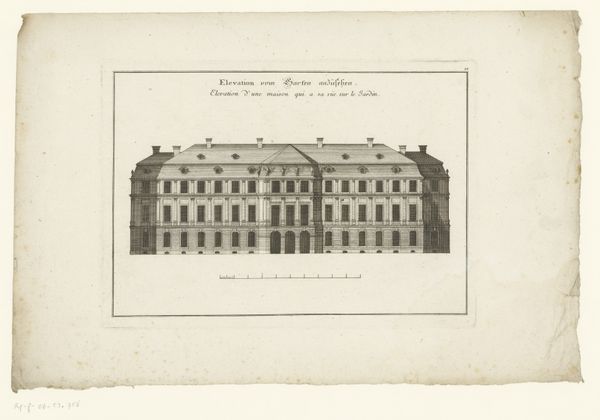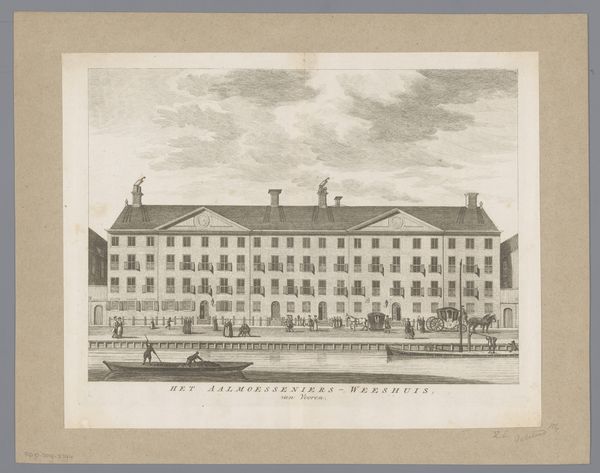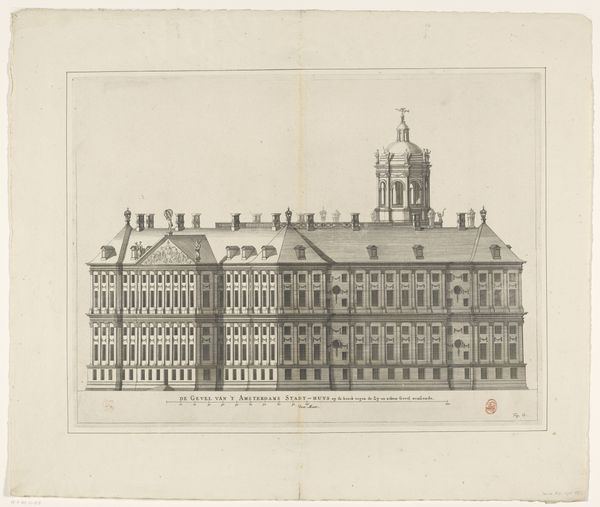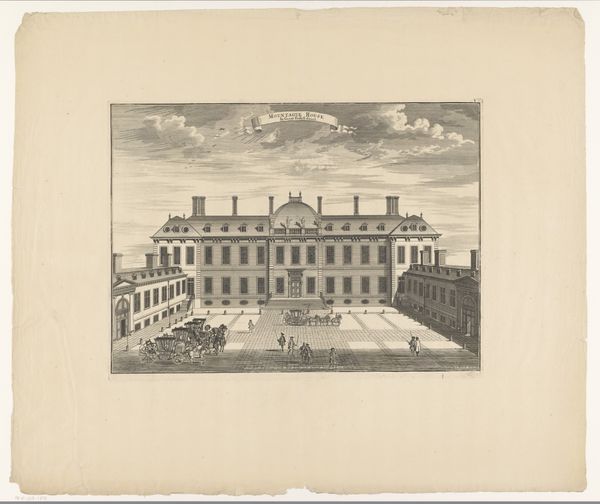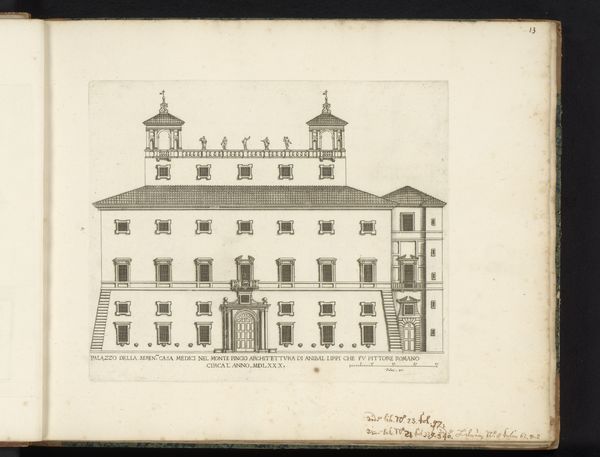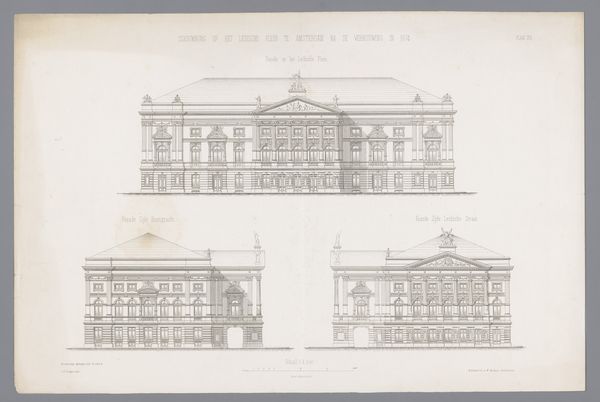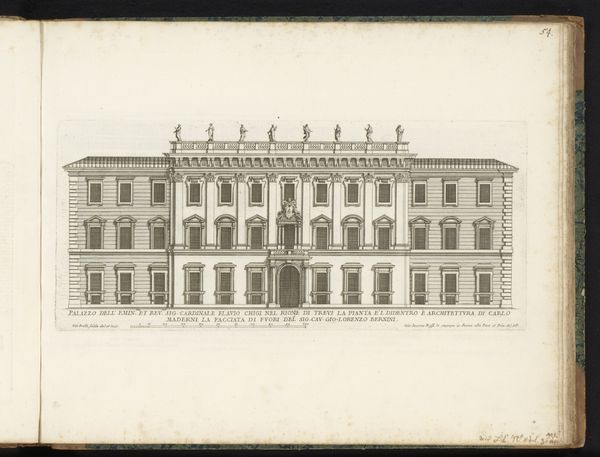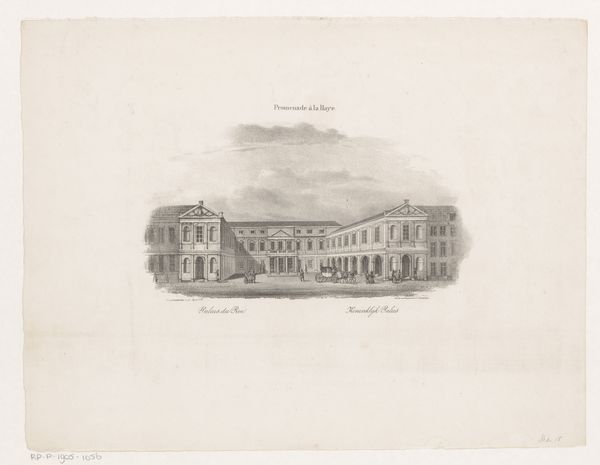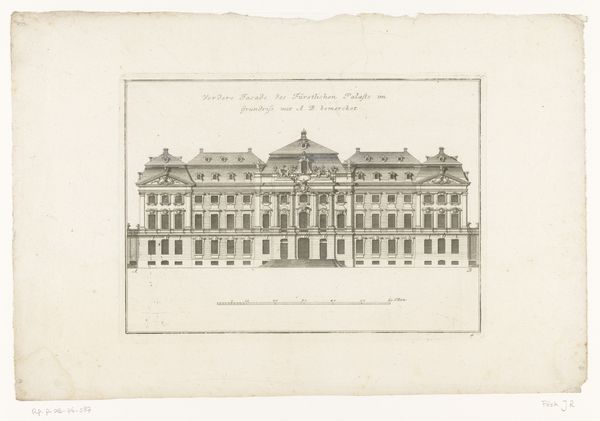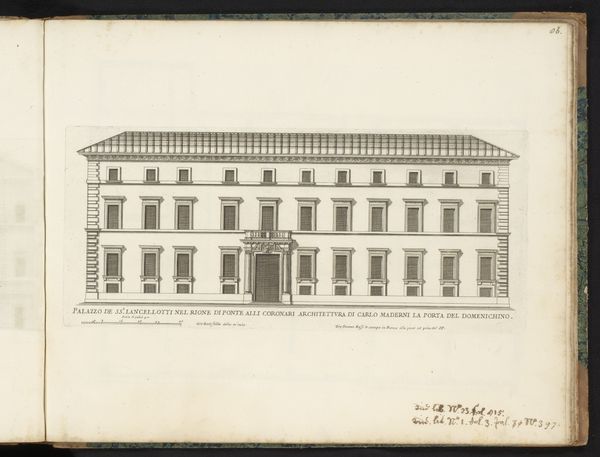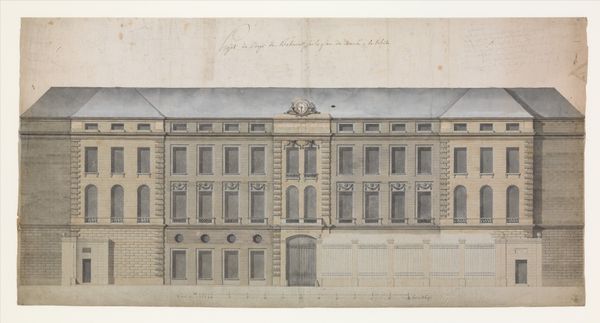
print, engraving, architecture
#
dutch-golden-age
# print
#
old engraving style
#
cityscape
#
engraving
#
architecture
Dimensions: height 412 mm, width 516 mm
Copyright: Rijks Museum: Open Domain
Editor: This engraving from 1661, created by Dancker Danckerts, is titled "Achtergevel (westzijde) van het Stadhuis op de Dam," or, translated, "Rear facade (west side) of the Town Hall on the Dam Square." It feels so precise and technical. What can you tell me about it? Curator: From a materialist perspective, let’s consider the printmaking process itself. The act of engraving demanded skilled labor, shaping copper plates that, with ink, produced multiples. The print, therefore, isn't a singular object but one of many, widely circulated. Consider the cost, access and dissemination of the print: who owned this print? Editor: That makes me think about how this image of the Town Hall facade served as a sort of readily accessible architectural blueprint for artisans beyond Amsterdam? Curator: Precisely. It could shape aspirations and architectural decisions throughout the Dutch Republic. Furthermore, by showcasing such a civic symbol through mass-produced prints, the burghers could reinforce social order and legitimize its ruling class, embedding its power within the daily lives of its citizens. How does that material availability impact the building’s legacy, its symbolic reach? Editor: So, it’s not just a pretty picture, but a tool used to reinforce societal power structures. Thinking about that, it also suggests how architecture itself isn’t neutral. Curator: Exactly! The building represents a major consumption of raw materials. Think of the labor required in quarrying and transporting the stones, or processing lumber. Every aspect speaks to a specific, intricate network. This print, by democratizing its image, amplifies that architectural statement and solidifies social hierarchy. Editor: I see the print as both reflecting the physical construction of a building and the ideological construction of Dutch society. That’s really fascinating, to see the tangible labour and implications tied to something seemingly just "aesthetic". Thanks for widening my perspective!
Comments
No comments
Be the first to comment and join the conversation on the ultimate creative platform.
